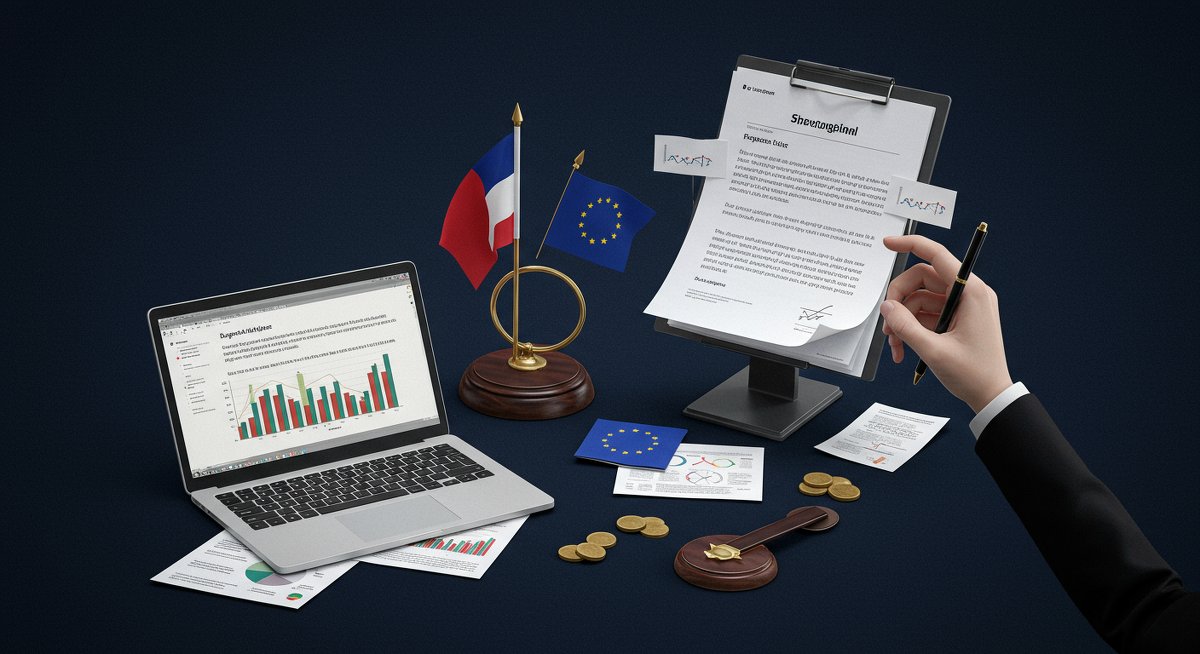As experienced European P2P investors, you understand the inherent risks involved in this investment class. The possibility of a P2P platform failing is a serious concern, and one that demands proactive measures. This comprehensive guide provides a detailed action plan, equipping you with the knowledge and strategies to navigate such situations effectively and protect your investments. We will delve into the core issues, offer a step-by-step framework, and provide insights on prevention, all while keeping European regulations and investor rights at the forefront.

The Problem: What's Really Happening
Platform failures in the P2P lending space, while not frequent, can be devastating. They expose investors to the potential loss of their capital, causing significant stress and financial setbacks. These failures often stem from mismanagement, fraud, or simply a lack of sufficient capital to weather economic downturns. Understanding the underlying causes is the first step in mitigating the impact.
One of the primary issues is the lack of robust regulation in some jurisdictions, which can make it easier for unscrupulous platforms to operate. This lack of oversight can lead to poor lending practices, inadequate risk management, and ultimately, platform collapse. Another factor is the complex structure of some platforms, with multiple layers of intermediaries, which can obscure the flow of funds and make it difficult to track where your money is. Finally, economic downturns can significantly increase the default rate on loans, putting immense pressure on platforms and increasing the risk of failure.
Example 1: In 2023, a smaller P2P platform in the Baltic region faced liquidity issues due to a sudden increase in loan defaults. Investors, who had diversified across various loans, found themselves with delayed payments and uncertainty regarding the recovery of their funds. This situation highlighted the importance of diversifying not only across loans but also across platforms and geographies.
Example 2: A larger platform in the UK, operating with a hybrid model (partially regulated), experienced operational difficulties when a key partner went bankrupt. The platform's investors, especially those with larger sums invested, faced considerable delays in accessing their funds and uncertainties regarding the recovery timeline. This demonstrated the significance of understanding a platform's business model and the potential risks associated with third-party dependencies.
Example 3: A platform in Southern Europe, operating with a more aggressive lending strategy, experienced a sharp increase in loan defaults. While the platform claimed to have sufficient reserves, investors found it difficult to obtain transparent information about the loan portfolio and the recovery process. This case underscores the critical need for transparency and the importance of due diligence on a platform's financial health.
Expert Tip: Always scrutinize the platform's financial reports, paying close attention to its debt-to-equity ratio, cash reserves, and provision for bad debts. These metrics provide insights into the platform's financial stability and its ability to withstand adverse economic conditions.
Why This Affects European Investors
European investors are particularly vulnerable due to the varying regulatory landscapes across the continent. While some countries have strong investor protection measures, others lag behind. This unevenness means that your level of protection can significantly vary depending on the platform's location and the jurisdiction of the loans. Additionally, cross-border lending can further complicate matters, making it challenging to navigate legal and regulatory frameworks when a platform fails.
European investors, particularly those who are not fully aware of the local regulations, can be at a disadvantage. For example, investors in countries with less stringent regulations may find it more difficult to recover their funds. The impact of platform failure can be far-reaching, affecting not only your financial well-being but also your confidence in the P2P lending market as a whole.
Root Causes Analysis
Several factors contribute to P2P platform failures. Poor risk management is a primary cause. Platforms that approve loans without sufficient due diligence, or that fail to diversify their loan portfolio, are inherently more vulnerable. Fraudulent activities, such as misrepresenting loan performance or diverting investor funds, can also lead to collapse. Additionally, operational inefficiencies, such as inadequate technology or customer service, can erode investor trust and drive away investment. External economic factors, like rising interest rates or economic downturns, can exacerbate these issues by increasing default rates and reducing the platform's profitability.
Common Mistake: Many investors fail to fully understand the risks associated with a platform's business model. They may focus solely on the interest rate and overlook the platform's financial health, regulatory compliance, and risk management practices.
Step-by-Step Solution Framework
When a P2P platform faces difficulties, a structured approach is crucial to protect your investment. Here's a step-by-step framework:
Step 1: Immediate Action – Monitor and Communicate. The moment you suspect a problem, start monitoring the platform’s communications closely. Look for any announcements regarding operational issues, delays in payments, or changes in terms. Simultaneously, communicate with other investors, using forums or social media to share information and coordinate actions. This immediate communication can provide valuable insights and support.
Step 2: Assess the Situation – Due Diligence and Research. Conduct thorough research to understand the situation. Review the platform's financial reports, regulatory filings, and any communications with investors. Assess the platform's liquidity, loan portfolio quality, and any ongoing legal or regulatory issues. Independent platforms like Swaper can offer insights into platform risk and performance, though remember to conduct your own due diligence.
Step 3: Understand Your Rights – Know Your Protections. Familiarize yourself with your legal rights as an investor. This includes understanding the terms and conditions of the platform, as well as the relevant European regulations and any applicable investor protection schemes. Determine whether the platform is regulated and, if so, by which regulatory body. Research the potential for investor compensation schemes that may be available.
Step 4: Contact the Platform – Demand Transparency and Action. Initiate direct communication with the platform. Request clear and detailed information about the situation, including the reasons for any delays, the status of your investments, and the platform's plan for recovery. Keep a record of all communications. A platform's transparency during difficult times is a key indicator of their commitment to their investors.
Step 5: Explore Legal Options – Seek Professional Advice. If the situation does not improve or if you suspect fraudulent activity, consult with a legal professional specializing in financial services and investor rights. They can assess your legal options, which may include joining a class-action lawsuit, filing a formal complaint with the regulatory body, or initiating legal proceedings to recover your funds.
Step 6: Diversify and Rebalance – Protect Your Portfolio. Review your overall investment portfolio and rebalance as needed. Consider diversifying your investments across different P2P platforms and asset classes to reduce your exposure to any single platform. Ensure that your portfolio aligns with your risk tolerance and investment goals.
Step 7: Document Everything – Maintain Records. Maintain meticulous records of all your interactions with the platform, all financial transactions, and any legal advice you receive. These records will be critical in any legal proceedings or claims for compensation.
Expert Tip: Engage with investor forums and online communities to share experiences and gain insights from other investors. Collective action can often be more effective than individual efforts, especially when navigating complex legal or regulatory matters.
Prevention Strategies
Proactive measures can significantly reduce the risk of losses. The cornerstone of prevention is thorough due diligence. Before investing in a platform, carefully examine its financial statements, business model, and management team. Verify its regulatory compliance and any insurance or guarantee schemes offered. Diversification is another crucial strategy. Spread your investments across multiple platforms and loan types. Regular monitoring of your investments is essential. Stay informed about the platform's performance, any changes in its operations, and any news or developments that could affect your investments.
Example: Before investing in a platform, review its financial statements. If the platform's debt-to-equity ratio is high, this could indicate a risk. Compare the platform's financial data with industry benchmarks to identify any potential red flags. Also, check if the platform is authorized by the relevant financial regulatory body. If they are, check for any warnings. By conducting thorough research, you can significantly reduce the risk of investment losses.
Common Pitfall: Over-reliance on high interest rates without considering the underlying risk. Platforms offering exceptionally high rates may be taking on higher risk loans or operating with less robust risk management practices.

When to Seek Professional Help
Knowing when to seek professional assistance is critical. If you experience significant delays in receiving payments, are unable to obtain clear information from the platform, or suspect fraudulent activity, consult a financial advisor or legal professional. If you are unsure about your rights or how to proceed, expert advice is invaluable. A legal professional can help you understand your options and navigate the complexities of regulatory and legal frameworks. A financial advisor can assist you in assessing the impact of the platform failure on your overall portfolio and help you develop a plan for recovery.
Expert Tip: Keep detailed records of all communications, transactions, and any supporting documentation. This includes emails, payment confirmations, and any terms and conditions. These records will be essential if you need to pursue legal action or file a claim.
European Legal Protections
European investors benefit from a range of legal protections, though the specific measures vary by jurisdiction. The GDPR (General Data Protection Regulation) ensures that platforms handle your personal data responsibly and transparently. MiFID II (Markets in Financial Instruments Directive II) offers some protections for investors. Investor compensation schemes may be in place to cover losses in the event of platform failure. These schemes are typically funded by contributions from regulated financial institutions and are designed to protect investors up to a certain amount. Familiarizing yourself with these protections and understanding how they apply to your investments is crucial.
Example: In the event of a platform failure, an investor in Germany might be able to claim compensation under the German Deposit Guarantee Scheme, up to a certain limit, if the platform is covered by this scheme. Similarly, investors in other EU countries have access to investor compensation schemes, although coverage and limits can vary. Understanding the specific protections available in your country is vital.
Your Action Checklist
To recap, here's a checklist for European investors facing P2P platform failure:
- Monitor: Watch for communication, payment delays, or changes in terms.
- Research: Conduct thorough due diligence and gather information.
- Know Your Rights: Understand EU regulations and compensation schemes.
- Communicate: Contact the platform and demand clear information.
- Seek Advice: Consult financial and legal professionals.
- Document: Maintain records of all interactions.
- Diversify: Rebalance your portfolio to reduce risk.
By following this action plan, you can significantly increase your chances of protecting your investment and navigating the challenges of a P2P platform failure. Remember, the best defense is a good offense, which means staying informed, practicing due diligence, and being prepared for any eventuality.